Orivesi 作者: 来源: 发布时间:2021-10-13
一、所属省或是州,具体位置,人口,面积
Orivesi is a town and a municipality of Finland. It was founded in 1869. It is part of the Pirkanmaa region. The municipality has a population of 9,210 (31 January 2019) and covers an area of 960.09 square kilometres (370.69 sq mi) of which 160.53 km2 (61.98 sq mi) is water. The population density is 11.52 inhabitants per square kilometre (29.8/sq mi).
Neighbouring municipalities are Juupajoki, Jämsä, Kangasala, Kuhmoinen, Ruovesi and Tampere. The municipality is unilingually Finnish. The name Orivesi means literally "stallion water". The municipality of Eräjärvi was consolidated with Orivesi in 1973. A part of the municipality of Längelmäki was consolidated with Orivesi in 2007. Orivesi is mostly known for its Oriveden Opisto art school. The town center of Orivesi is located by the lake Längelmävesi.
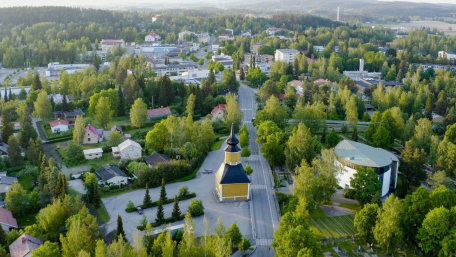
二、自然地理
1.地理条件
Orivesi has more than 350 lakes. The landscape of Orivesi is dominated by Längelmävesi, into which most of the area's water bodies fall. The parts of the maze-like Längelmävesi in the Orivesi area are Enonselkä, Ristiselkä, Pappilanselkä, Koljonselkä, Viuhkoselkä, Huhkaimenselkä and Kirjaanselkä. The northeastern end of Kangasala's Vesijärvi also extends to the Orivesi area. Some of the lakes in the western part of Orivesi flow into Lake Näsijärvi. The city's largest elevations, which extend more than 200 meters above sea level, are located in the northwest near the borders of Tampere and Ruovesi. The average altitude of the terrain is 100-150 meters. At the end of 2017, Orivesi had 9,285 inhabitants, of whom 6,537 lived in agglomerations, 2,650 in sparsely populated areas and the coordinates of the place of residence of 98 inhabitants were unknown. The degree of agglomeration is calculated for those residents whose coordinates of residence are known; The degree of agglomeration in Orivesi is 71.2%. The urban population of Orivesi is divided between two different agglomerations.
2. 交通情况
By the end of the 1960s, the church village and the station area had grown into one of the municipality's largest agglomerations, where more than half of the municipality's population lived. The development of the region was also facilitated by the improvement of transport connections in the 1960s and 1970s. A new, much faster route on Highway 9 to Tampere was opened to traffic in 1972.
三、经济发展和规模
In 1911, the Hirsilä shoe factory began operations and Juho Nisula wrote the first Finnish-language local history of the Orivesi area, Piirteitä from the parish of Eräjärvi. The first car in Orivesi was acquired by Kustaa Ala-Sahra from Sahrajärvi in 1912. The municipality of Juupajoki became independent and separated from Orivesi in 1913. Orivesi Cooperative (later the Kotipohja trade) was founded in 1916 and the following year the first municipal veterinarian in Orivesi started working.
At the beginning of the 2010s, Orivesi had financially difficult years. In 2013 and 2014, social security costs increased rapidly, as a result of which taxation was tightened in 2015 as part of an extensive economic rebalancing program. With the program, the direction changed, net expenses decreased by more than four percent and the financial statements were positive. A significant change was the launch of SOTE co-operation with Tampere.
There are about 4,000 employed people in Orivesi and the locality is about 80% self-employed. In February 2018, the unemployment rate was 10.4%. The industries are divided as follows: services 60%, processing and industry 29%, agriculture and forestry 11%. The city employed about 320 people at the end of 2017. There are about 750 companies and about 260 farms in the locality. In 2018, the largest employer is KVL-Tekniikka Oy, which has about 150 employees, and Josira Oy and Orneule Oy have more than 30 employees. In 2017, Senop Oy, Säästöpankki Sinetti, Kenkätehdas M-Shoe Makers Oy, Rakennusliike K & M Lammi Oy and Landlady Oy paid the most corporate taxes.
The Orivesi gold mine is located in Orivesi. In 1994–2003, Outokumpu Oy operated. In 2007, Polar Mining restarted mining. The Orivesi Arevarikko (OrivAseV) depot of the Defense Forces operated in the locality until 2003. Its operations will be continued by the Millog unit.
四、产业特点重点项目
Oriveden Kenkätehdas Oy and Kuusisto footwear factory started operations in 1918. In 1919, the first municipal councils of Orivesi and Eräjärvi began to function, and the first municipal clerk of Orivesi began his work. The Karelian shoe factory began operations and Oriveden Sähkö Oy was founded. Orivesi was once known for making footwear and was called a shoemaker. In the 1970s, the municipality had a total of six shoe factories, employing more than 500 people and producing about 4,500 pairs of footwear a day, which accounted for 10% of the total production of the Finnish shoe industry.
五、风景名胜,景点( attractions)
1. Rönni - Summer Dance Pavilion
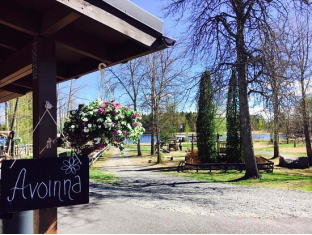
Rönni dance pavilion, cafe, restaurant and park by the Lake Längelmävesi. Summer dances since 1949. Finnish open air dance culture is unique. On three centuries people have gathered together to dance during light summer nights. Open daily June 1 - August 12, on weekends May 12 - September 15. Dances on Saturdays at 8 pm - 1 am. In July also on Wednesdays at 7 pm - midnight.
2. Eräjärven Työväen Näyttämö
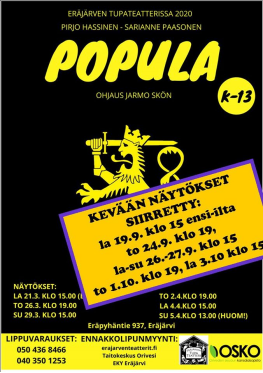
Eräjärvi Työväen Näyttämö has been an amateur theater since 1980. Every year, ETN produces one full-night play at the Rönn Summer Theater and the Tupateatter on the stage of Eräjärvi Seuratalo.
3. Oriveden Kirkko
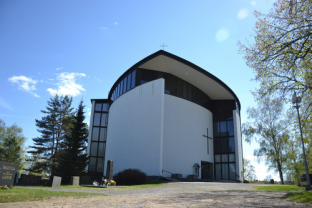
The current church in Orivesi was built on the site of an old wooden church that burned down in 1958. The Arch Church, designed by architects Kaija and Heikki Siren, was inaugurated in August 1961. The birch tree's abstract altarpiece, Calvary Rock, was made by Kain Tapper, the church's textiles were designed by Dora Jung and the candlesticks, wound and wreaths by Bertel Gardberg. The 39-voice organ produced by the Kangasala organ factory was also completed in 1961.Orivesi Church is the main church of Orivesi parish, where the parish meets weekly for worship, but also for funerals, weddings and baptisms.Orivesi Church can accommodate 800 guests. There is a ramp for the disabled on the outside stairs of the church, but a wheelchair user needs a helper on the ramp. Three steps are ascended to the shells of the church, which unfortunately restrict the access of persons with reduced mobility to the altar.
4. Taitokeskus Orivesi
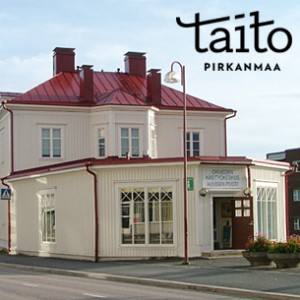
At the Skills Centers, you can weave rugs, home textiles, accessories and poppans independently, guided or on course. Warps are waiting ready in the trees, you can design your own products or take advantage of the products of the seasonally changing collection. We also listen to our customers' wishes! Our professional staff will guide you through the secrets of weaving.
5. Eräjärvi Stone Museum

Agates, orbicular granite, feldspar, kimberlite, diamonds etc. The Erajarvi Stone Museum hosts a wide and interesting selection of domestic and foreign stone types, including precious and ornamental stones as well as rare minerals. Run by the society Erajarvi Seura, this special museum is located in a former granary, in the closed yard of the wooden church of Erajarvi.
六、历史文化
1.历史
A few dozen so-called Discovery of objects during the culture of Suomusjärvi, which shows that hunters and fishermen moved in the area early on. The bronze or Iron Age finds, on the other hand, are not known, so the Orivesi region may have been an uninhabited hinterland of the people of Kangasala. In the Middle Ages, settlers from some Kangasala villages moved to the area. The first mention of Orivesi as a parish, either as an independent or as a chapel in Kangasala, dates from 1466 in connection with a border dispute dealt with in the district. The Orivesi Priest, among others, appears in the district minutes.
Orivesi is first mentioned as an independent parish and parish in the 1540 land register, according to which there were 56 tax-paying houses. Längelmäki and with it Kuorevesi separated from Orivesi in 1593. A regular so-called locker's mail route passed through Orivesi from 1598. The first statesman to come from Orivesi was Jaakko Juhananpoika Kråkfelt, who cultivated Vetterkulla and represented his parish in Stockholm in 1675. In 1695, the combined population of Orivesi and Lake Eräjärvi was calculated for the first time - about 2,400 people. A few years later, the greatest catastrophe in the history of Orivesi occurred to date, when about one in three inhabitants, 766 people, died during the Great Famine of 1697. An old belfry, which as a separate building was spared from the arson of the church in 1958.
In 1727, Orivesi held its first private market and it was organized until 1801, when it was abolished. In 1741, a parish hall was built where councils could be held. In 1776, Orivesi and its neighbors were transferred from the provinces of Turku and Pori to the newly established county of Häme. Orivesi Fifth Church, the so-called Orivesi old church, completed in 1781. The church belfry was built in 1783-1793. When the army of the Grand Duchy of Finland was disbanded at the beginning of the 20th century, the former barracks of the 27th reserve company of the Hämeenlinna sniper battalion, which had been training in Orivesi until the end of the 19th century, were handed over to the leprosy hospital. Orivesi Leprosy Hospital was in operation from 1904 to 1953, while Orivesi Municipal Hospital had started operating in a rented apartment in 1902.
In 1918, during the Civil War, Orivesi was the scene of fierce battles. The Reds held Orive for a couple of months. On March 18, 1918, the whites, led by Colonel Karl Fredrik Wilkman (Wilkama), took over the Orivesi railway station, but were forced to retreat by the Reds who attacked by armored train, and the Reds, who had withdrawn from Vilppula, were able to flee towards Tamper. White troops finally captured Orivesi on March 20.
In the 1930s, the Orivesi Co-educational School building (1931), the Paltanmäki Open-Air Museum (1934) and the first modern plastered brick residential and commercial building in Orivesi Church Village (1937) were commissioned. Ensi Oy's shoe factory began operations in 1937. During World War II, there was an infantry training center in Orivesi. After the Continuation War, the Valkjärvi migrant population was settled in Orivesi [12] and Orivesi developed into a significant service center in Northeast Pirkanmaa. In 1946, Orivesi Joint School became the leading university and the upper secondary school began operations. The Orivesi Regional Citizens 'College (originally the Orivesi Workers' College) began operations in 1947.
2. 文化
Orivesi's first sports and gymnastics club, Orivesi Ponnistus, was founded in 1908. In 1909, Orivesi Retirement Home began operations, and Orivesi College began operations as the Keski-Häme Folk High School in Länkipohja. In 1910, the college moved to the church village of Orivesi and a workers' house was built.
Between 2005 and 2014, Orivesi hosted the Hole Edge Film Festival, which included a film competition, domestic and international feature and short films, filmmakers' speeches, music and art exhibitions. From the beginning of 2007, part of the municipality of Längelmäki was connected to Orivete, part to Jämsä.
The Orivesi College, which has been operating in Orivesi since 1910 and focused on art education, transferred its education to Tampere in the summer of 2018. The college was maintained by the Support Association (1909-1946), the Folk Education Society (1946-2014) and the Ahlman School Foundation (2015 -). During the summer, the college housed the Klemetti College, which held choir singing, choir conducting, solo singing and pronunciation courses.
七、其他信息
In the 1950s, the Orivesi municipal semi-permanent fire brigade (1951) and the Orivesi water supply cooperative (1955) were established. The Orivesi-Jämsä railway line was opened to traffic in 1952. In 1953, the new main building of Orivesi College was completed, in connection with which the Klemetti College was also opened. The new municipal hospital and the Rönn dance floor were completed in 1957. The old church in Orivesi was destroyed in a fire in 1958.
八、联系方式
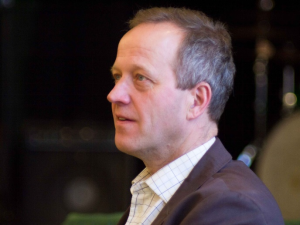
Mayor of Orivesi: Juha Kuusisto
Phone number: (03) 5655 6000
Website: https://orivesi.fi/
Email: kirjaamo@orivesi.fi/ etunimi.sukunimi@orivesi.fi
Address: PL 7, Keskustie 23, 35301 ORIVESI
